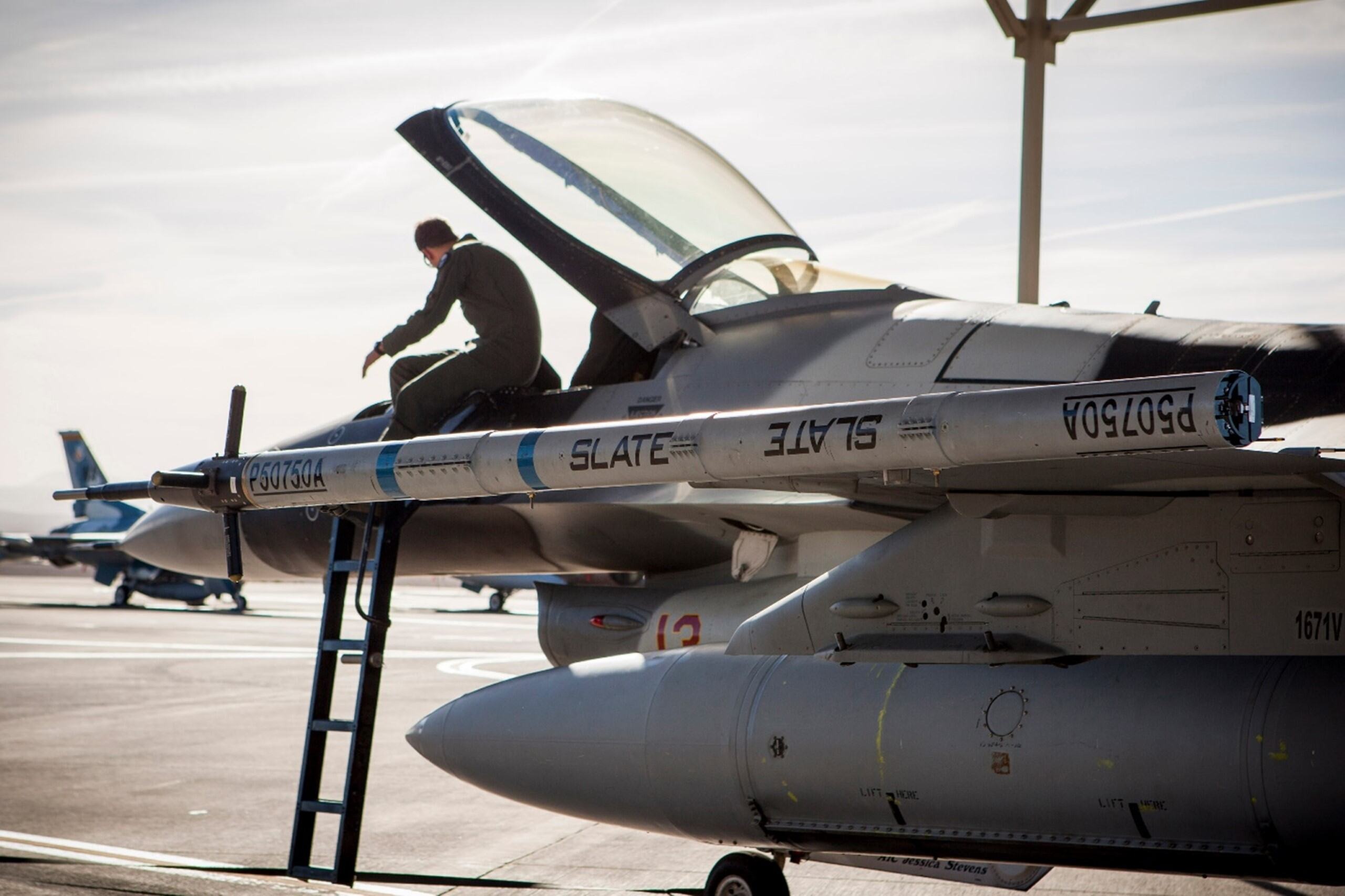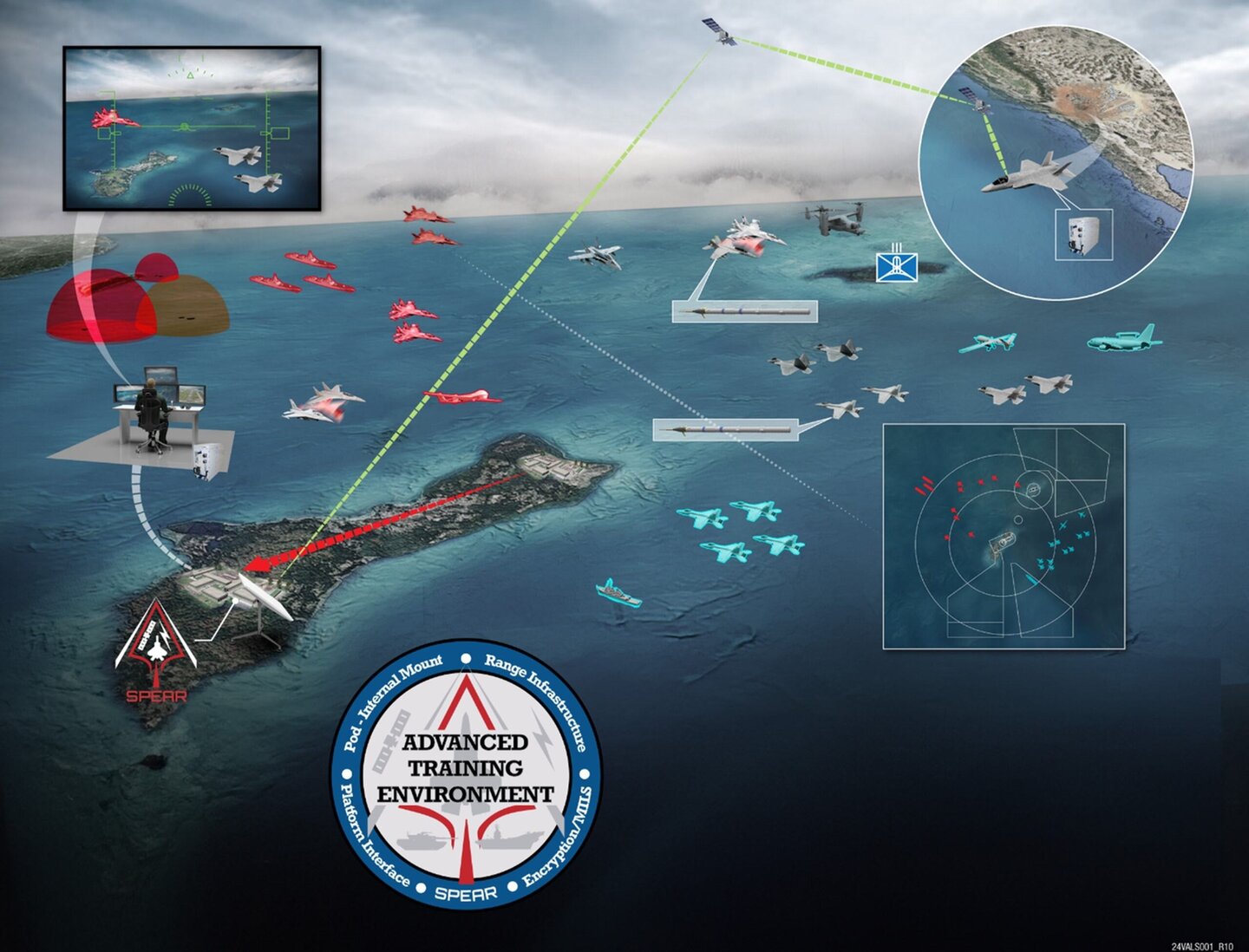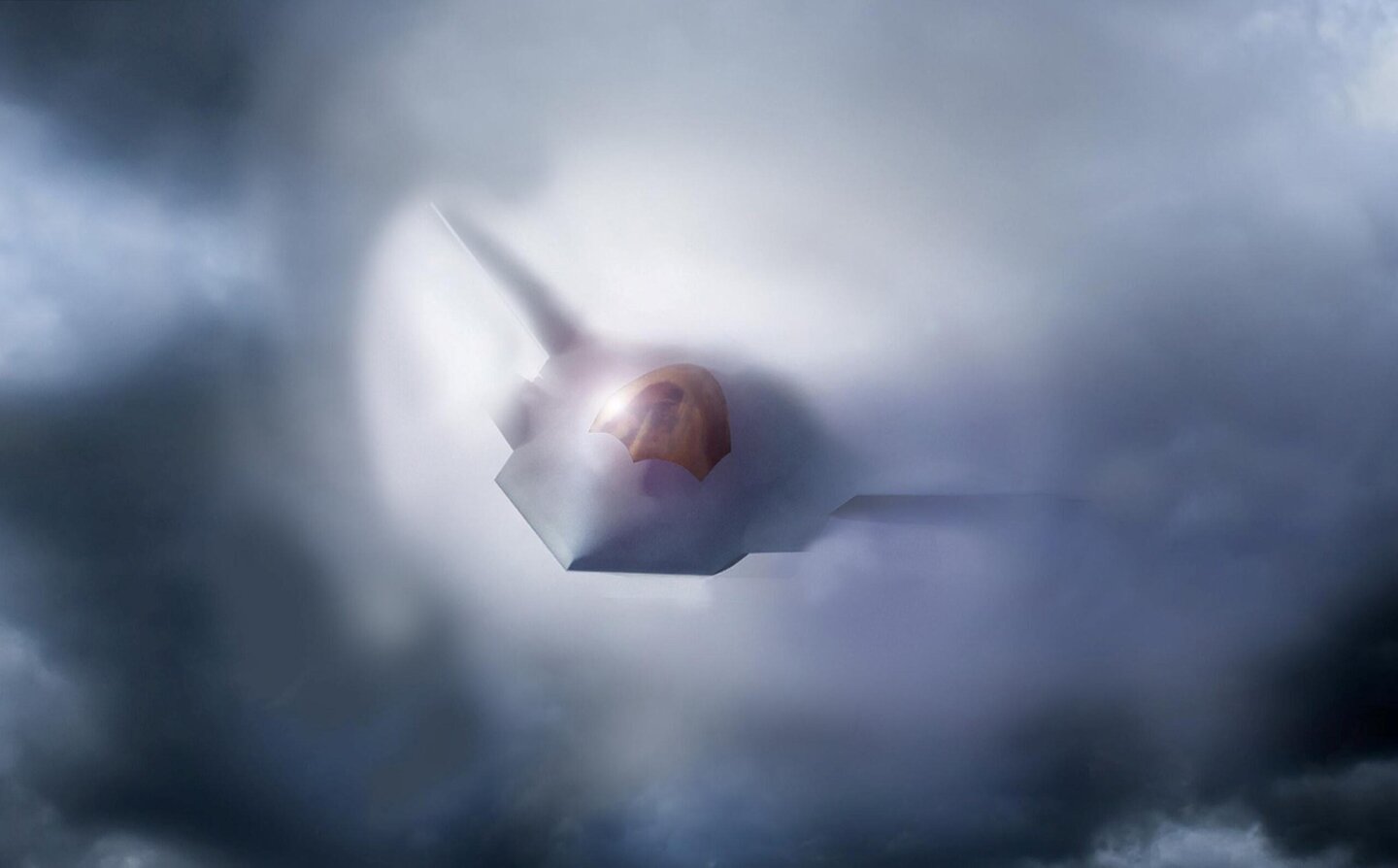Feature
Blended solutions: training in a digital world
Cubic Defense discusses how it will enable the US Air Force units to train persistently under local conditions. John Hill reports.

US Air Force F-16 with a SLATE pod. Credit: Cubic Defense
The US military must get its training right now to replicate the conflicts to come. However, this has proved difficult as capabilities evolve too quickly to keep pace, and all the while adversaries such as China are closing a technological gap that the Western world has hitherto taken for granted.

Paul Averna, Vice president and general manager of advanced training solutions at Cubic Defense
Vice president and general manager of advanced training solutions at Cubic Defense, Paul Averna, spoke to Global Defence Technology about how the company’s live, virtual, and constructive (LVC) training environment, known as the Secure Live Virtual and Constructive Advanced Training Environment (SLATE) system, is breaking down siloed systems and allowing personnel – no matter their role or capability – to train together as one joint force.
Averna also touched on SLATE’s agility to adopt and account for emerging technologies, many of which are not available yet, such as sixth generation aircraft and hypersonic weapons.
Given the strategic thinking in Washington, Cubic has partnered with CAE, a Canadian manufacturer of simulation technologies, to bring digital tools to forward deployed forces across the Indo-Pacific theatre.
There, the two companies enabled pilots, maritime interdiction, and logistics, among other roles, to rehearse tactics in one combined, shared, and hybrid training environment.
What is LVC?
LVC is a blended form of military training that allows personnel in the real world to operate with and/or against simulated people, platforms, and equipment in the virtual space. It is not enough for pilots to practice flying in a singular aircraft simulator.
For that reason, Cubic is bringing them all together into the SLATE system.
“We can no longer think exclusively about a couple of aviation platforms out there, operating and delivering their singular effect, like we've been doing for the last 30 years,” Averna observed. “We also have to take into consideration other contributors that are going to be part of that outcome.”
One challenge to doing this, Averna said, is that the old way of doing things, with individual legacy simulation systems, “can no longer faithfully replicate what the pacing peer challenge might be and the speed at which capabilities are evolving anymore.”
Valiant Shield 2024
In an old, converted schoolhouse in the middle of the island of Guam, the two companies set up their simulation kit. Their suite included simulators for F/A-18s and F-16s, the F-35 effects-based simulator, and the Joint Terminal Attack Controller trainer to simulate protocols for air strikes.
“We only had a few live platforms in Guam at that time,” Averna said. “In fact, [the Air Force] didn’t have enough adversary platforms to be able to train to the level that they needed.”
To balance the blue and red forces, the team had an EA-18G Growler aircraft carrying a pod that would identify the platform as an enemy aircraft in the SLATE system.
“Sometimes [the Air Force] would have aircraft that were normally flying blue. They would turn them around and fly them as red,” said Averna.

Impression of the LVC simulated tactics in Guam during Valiant Shield 2024. Credit: Cubic Defense
However, American personnel will need to stay out and operate in a local area such as Guam for months at a time.
“You must exercise all of that through to understand truly what your capabilities are, and to do this once in training at a high-end environment like at Fallon or Nellis [US Air Force bases] or even up at the Joint Pacific Alaska Range Complex. That's great, except [many personnel] are forward deployed now.”
Proficiency with these platforms under local conditions will fail over time if there is no permanent means to run through tactics during forward presence. Given this, it is critical that the service is able to provide forces with a training environment where proficiency can be maintained.
For that reason, a lot of this capability will stay on in Guam on a permanent basis within the Indo-Pacific Command structure, indicating the strong demand signal for an enduring capability. A mobile version of this is also available, Averna emphasised.
The US Armed Forces is “going to be operating in the first island chain, in the second island chain, and having a mobile version of this is something that will help them with their concepts like the air combat employment or ACE concept with the [US] Air Force,” he said.
“They'll show up at an airfield like Tinian. They'll operate out of there for two weeks, and then they'll retrograde. We [can] roll them out on a C-17, set it up, and then for two weeks, they've got this authentic environment.”
Replicating emerging weapons and platforms
Cubic has been able to deliver a LVC environment capable of replicating fourth and fifth generation aircraft since 2018 in a simulation comprising about 400 computer generated entities conducted over Nellis Air Range in Nevada.
However, the US military must be able to train the same way they intend to operate in future military operations, as Averna outlined, precisely replicating minute aspects. In doing so, Cubic must be able to shape its LVC space to account for emerging and disruptive technologies on the horizon.
At the end of March, the US Air Force and Boeing announced that the future Next Generation Air Dominance crewed fighter jet, subsequently designated the F-47 and which will be the centrepiece of a new crewed-uncrewed teaming concept, will fly in the next four years.
Similarly, hypersonic weapons are often touted for exacting disruptive effects in the battlespace, particularly Russian Kinzhal and Zircon missiles used against Ukraine, but a full-fledged capability is not available yet. To preempt this, Nato set up a group activity to model and simulate hypersonic systems to validate the right aerostructures to inform a mature concept.

An artist’s impression of the future NGAD platform, now designated the F-47 fighter jet. Credit: US Air Force
Despite the time pressure, Averna said that it is still possible to work through what the new tactics, techniques, and procedures should be in the emergent battlespace.
“Collaborative combat aircraft are interacting with your crewed systems, your live operators – whether they are saying target that particular group over there. They go off and do it on their own and report back when they have killed everything that was designated as a hostile, or they are just providing additional sensor information or suppression of a threat system so that you can continue your primary mission,” Averna said. “All that can be emulated in this environment without having to actually use a real capability.”
According to Averna, this agility in the virtual space will help the US military run through using next generation concepts to be ready to operate, “without revealing sensitive capabilities we’re not ready to disclose.”
A reliable first-strike capability that results in near-elimination of a devastating retaliatory capability is not feasible
Dr Tom Stefanick, non-resident senior fellow, Brookings Institution
We are always looking for opportunities that innovative technologies potentially offer to improve our training delivery
Commodore Steve Jose, UK MFTS head
Caption. Credit:
Total annual production
Australia could be one of the main beneficiaries of this dramatic increase in demand, where private companies and local governments alike are eager to expand the country’s nascent rare earths production. In 2021, Australia produced the fourth-most rare earths in the world. It’s total annual production of 19,958 tonnes remains significantly less than the mammoth 152,407 tonnes produced by China, but a dramatic improvement over the 1,995 tonnes produced domestically in 2011.
The dominance of China in the rare earths space has also encouraged other countries, notably the US, to look further afield for rare earth deposits to diversify their supply of the increasingly vital minerals. With the US eager to ringfence rare earth production within its allies as part of the Inflation Reduction Act, including potentially allowing the Department of Defense to invest in Australian rare earths, there could be an unexpected windfall for Australian rare earths producers.
